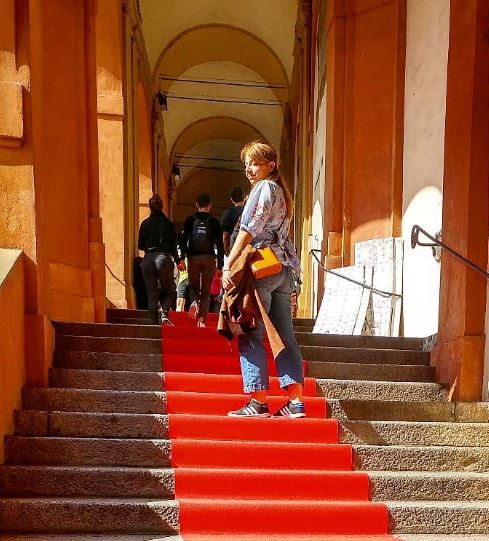Most photogenic towns in Greater Bologna
Updated on 02 December 2021 From Karoline Villacidro
Irmo Roberto Pradelli, lifelong amateur photographer and long-standing promoter of the lesser-known tourist places in Emilia Romagna.
According to his motto: a photo is born when an emotion connects heart, eyes and brain.
Bologna is full of treasures, right outside the old town centre. For those wishing to venture out with a keen eye, I would recommend starting from Borgo La Scola, one of the best preserved in the area, located in a strategic position among the Apennine mountains. As a matter of fact, the village overlooks the underlying valley from the intersection of the most important roads of the time.
Tips: stop off at the nearby Rocchetta Mattei!

Photo ©Irmo Roberto Pradelli
Another jewel in the crown is the village of Castel del Rio, one of Italy's richest chestnut groves, whose fruits, the Marroni di Castel del Rio, are protected by the prestigious PGI mark that regulates their production. A typical mountain village developing along the Santerno River Valley in the Imola area, it has long been the dominion of the Alidosi family, who bequeathed to the territory both Palazzo Alidosi, now the seat of the municipality and the Museum of the Gothic Line War, and the Alidosi Bridge.
Tips: enter the prison rooms of the Alidosi Bridge!

The one place to find the most secret photogenic corners is undoubtedly Dozza, close to Imola, recently named one of the most beautiful villages in Italy. Dozza is a real open-air museum where, on the walls and facades of the town houses, several great artists have found inspiration for their creations. Since 1960, indeed, Dozza has been hosting the Biennale del Muro Dipinto (Biennial Exhibition of Painted Walls), a historic painting event involving more than 200 artists over time, whose work has enriched the village walls with many pictorial treasures year after year.
Tips: do consider visiting the Fortress la Rocca e l’Enoteca Regionale!

Photo ©Irmo Roberto Pradelli
Inspired by the architectural model of Bologna, with its rich porticoes, I would also suggest a visit to Pieve di Cento, the " little Bologna", whose historic centre offers some unique examples of 16th-century porticoes. The village is rich in history and retains the urban layout of the Roman castrum, with the addition of the 9th-century parish church, followed by the erection of the mediaeval and Renaissance-Baroque town.
Tips: take some pics of the interiors of the Municipal Theatre Alice Zeppilli!

Photo ©Irmo Roberto Pradelli
Along the flat green expanses of the Bolognese plain, we come across San Giovanni in Persiceto, cradle of a renewed urban Street Art that embraces the history of the village and its traditions. You first reach the town centre at Piazzetta Betlemme, known as the "Piazzetta degli inganni" (tricky square) a fine example of urban redevelopment, where a unique atmosphere unfolds amidst small bars and paintings on the neighbouring house walls.
Tips: if you get the chance, make sure not to miss the centennial and colourful carnival!
Photo ©Irmo Roberto Pradelli
Feel at home... an essential attribute of the people in Emilia-Romagna for their social nature and ability to welcome anyone, including tourists. I think it is in Bazzano that you are really made to feel at home. A town on the border between Bologna and Modena, it knows how to charm in any kind of light. The ancient fortress of the Bentivoglio family, offering a fascinating backdrop for memorable awe-inspiring shots, has marked the history of the town since before the year 1000. It was here in 1799 that the poet Ugo Foscolo was imprisoned, captured by the Austro-Russians following the overthrow of the city. Many secrets and stories will be revealed over coffee in the central square (Piazza Giuseppe Garibaldi)... try it for yourself!
Tips: the fortress lends itself to perfect night-time shots!

Photo ©Irmo Roberto Pradelli
And now, all you have to do is start taking your best instagrammable shots!

